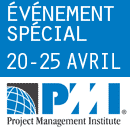Competition or colleagues?
The world of project management is a crowded place. There are multiple profesional accreditation options, multiple project management methodologies and countless books, blogs and tools to manage projects.
This is a good thing. I have never talked to two organizations who managed projects the same way. It makes sense that there would a wide range of options.
In most markets, when you sell something, the other products that are sold to do the same thing as your product are called competition. The customer base is finite and the game is to win over the heart of a majority of those customers. When we talk about AceProject and the world of project management software, this feels wrong to me.
There are many, many, many project management tools out there. Open source tools, free tools, affordable tools, expensive tools, web-based and desktop-based. The Google search for project management tool comes up with 188 million results. With that many players in the race to win over users and fans, how can we even see it […]
